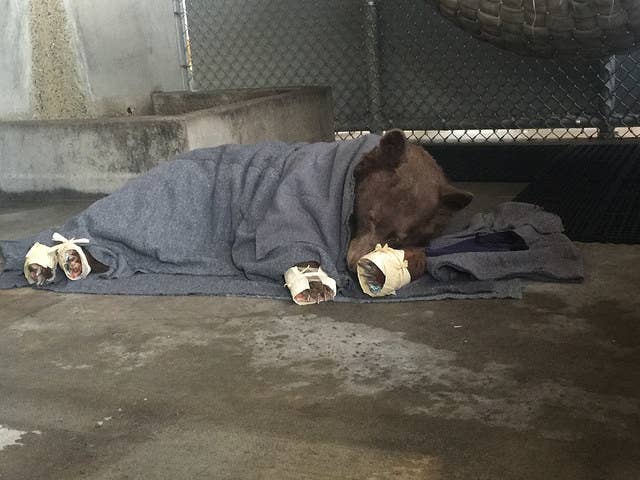
Two bears and a mountain lion burned in the recent Southern California wildfires have recovered after getting a new treatment for their paws: grafts of fish skin.
Veterinarians working with a California Department of Fish and Wildlife research lab treated the pair of bears and the young mountain lion with grafts of tilapia scales last month and released them a week ago, officials said in a statement.
The bears were in much worse condition than the lion, with "oozing wounds and, in some cases, paw pads that were completely burned off," the CDFW said.
According to officials, it was the first time fish skin had been used to treat burns on animals. The idea came up in discussions between Deana Clifford, a senior veterinarian with the CDFW, and Jamie Peyton, chief of integrative medicine at the Veterinary Medical Teaching Hospital at the University of California, Davis. The two doctors plan to write a paper on the fish skin treatment, said Kirsten Macintyre, communications director for the CDFW.

Doctors in Brazil are treating human burns with fish skin in the absence of supplies for more typical treatments, such as human or pig skin. Researchers say tilapia skin contains moisture and collagen at levels comparable to human skin.
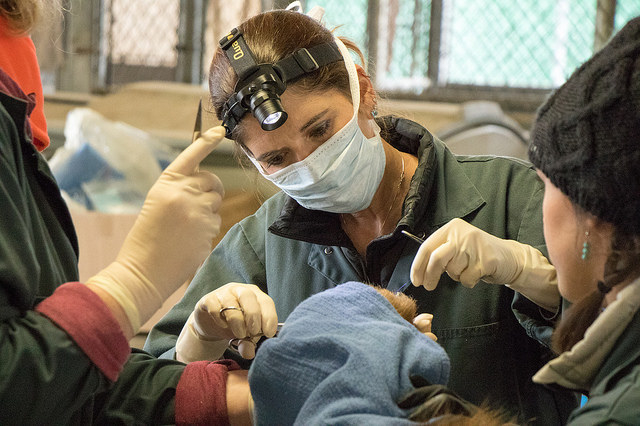
Researchers sutured the skin to the bears' paws and covered them with corn husks and rice paper (so the bears wouldn't chew off the fish skin immediately) while the animals were under anesthesia. Each bear received three treatments over the course of roughly a month.
Macintyre said that the treatment worked much quicker than typical burn salve and pointed to a photo showing the paws' progression.
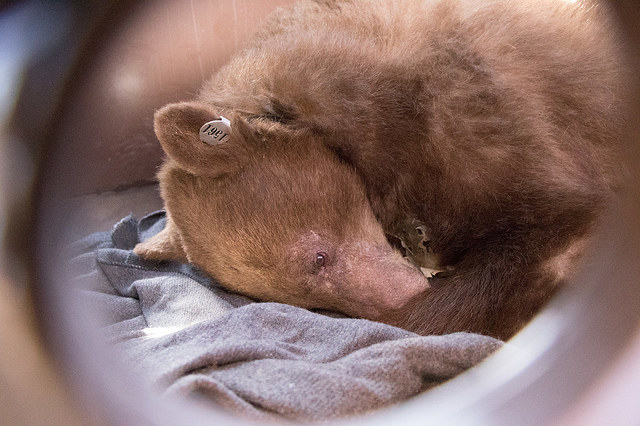
The bears also received acupuncture for pain management, a treatment that vets may use for domestic pets, but have never tried on wild animals before, though the principle and layout of pain points are similar, Macintyre said.
During treatment, the team also discovered that one bear was pregnant, which made treating her quickly all the more urgent.
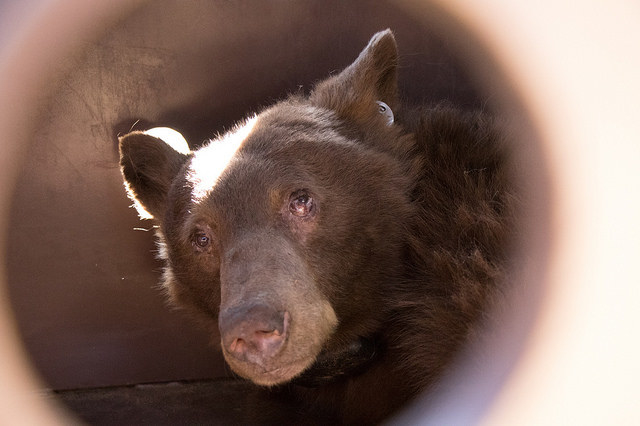
“We aren’t really set up to have a birth at the lab holding facilities," Clifford said in a statement. "We knew there was a high probability that she could reject the cub, due to all the stress she was under. We needed to get her back into the wild as quickly as possible.”
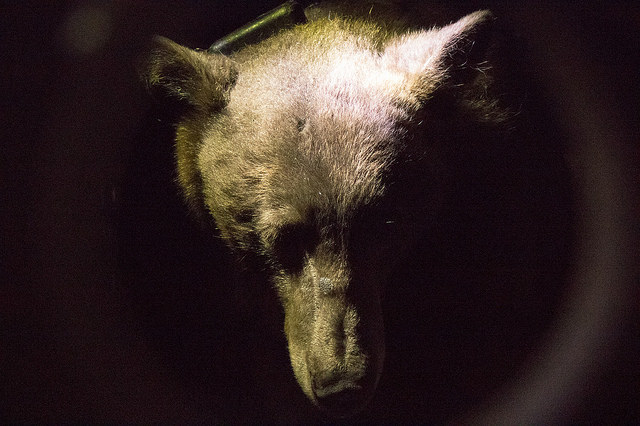
California Fish and Wildlife officials built dens for the bears' release to give them a place to wake up relatively free from danger.
“At this time of the year, most bears have established dens for the winter, but since these bears won’t have time to create a den, we hope to improve their chances of survival by creating a den for them so they have a home base and shelter right away,” Clifford said.
The team plans to monitor the bears by satellite.
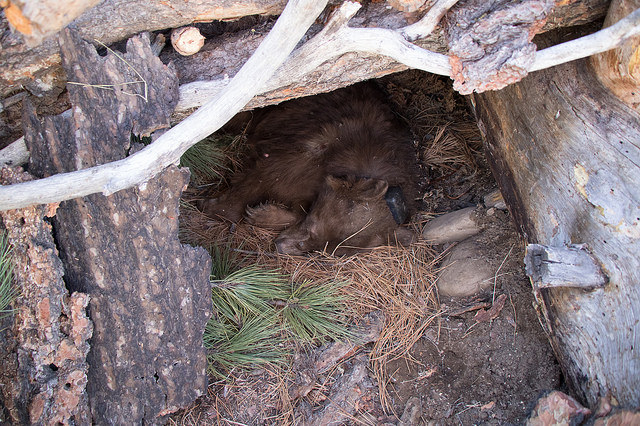
Clifford predicted that veterinarians will be treating more burned animals in the future as climate change makes the likelihood of more wildfires in future higher.
"California’s changing climate means that we’re likely to see more wild animals impacted by catastrophic wildfires," she said.
